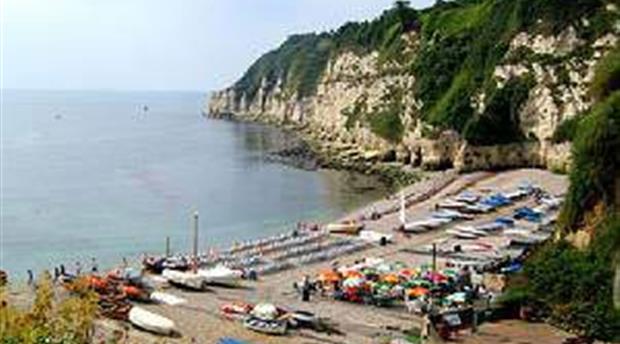This site uses cookies. By continuing to browse the site you are agreeing to our use of cookies. Read our privacy policy.
Beer

Beer is a typical example of a beautiful, unspoilt Devon fishing village.
Once a smugglers haven, set in one of the most sheltered positions on the Devon coast, Beer retains a strong seafaring tradition, with skills and business handed down from family to family to the present day. Beer's sheer cliff coastline shaped this tradition and has become something of a distinguishing feature of this small town.
The sheltered position of Beer has helped earn a reputation for hardy seamen, with the boats being able to put out to sea in weather that confined other village fleets to port. The steep cliffs that created this sheltered alcove, made ideal hideouts for smugglers, and created a second industry for the men of the area.
Beer is a natural suntrap and the views across the bay from Jubilee Gardens are simply stunning. The gardens were created by the people of Beer to honour Queen Victoria. The Gardens were set high on the cliffs over-looking the splendid sea views. The beach at Beer, and the waters in the bay itself, are very sheltered. Visitors are protected from the wind by the sheltered bay, and benefit from picturesque paraphernalia of the fishing industry the brightly coloured wooden boats, the nylon nets, winches, brightly coloured floats and old rope that lie around them. Beers has a small stream which - follows the line of the pavement - running through Beer's gently sloping streets across the beach to the sea.
Although much of Beer's history been linked to the fishing and smuggling activities of the men of the village, the local women also made a name for themselves as producers of fine quality lace. The lace was produced by women sitting outside their cottages, using the bright light of the sun to help them to create the delicate and time consuming pieces; which were then taken to nearby Honiton- the world famous home of lace in Victorian times.
The town name Beer, has its origins in the old English words for woodland - bere and beare - due to dense nature of the forrestation around the town in times gone by. Beer was constructed on a series of levels and the adjacent steep slopes have been utilised in the past for many diverse reasons. Sherborne Abbey, which used to be one of the largest landowners in the vicinity used the sheltered topography and mild microclimate of Beer to cultivate grapes for alcoholic drinks.
